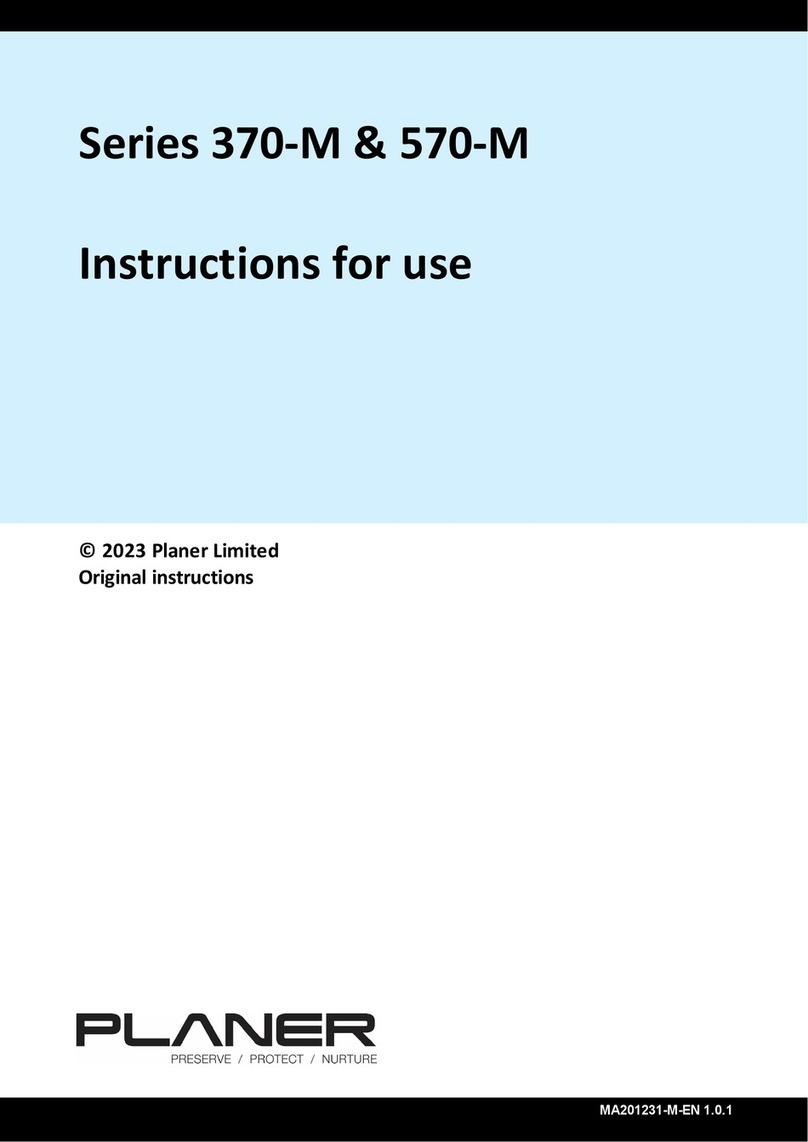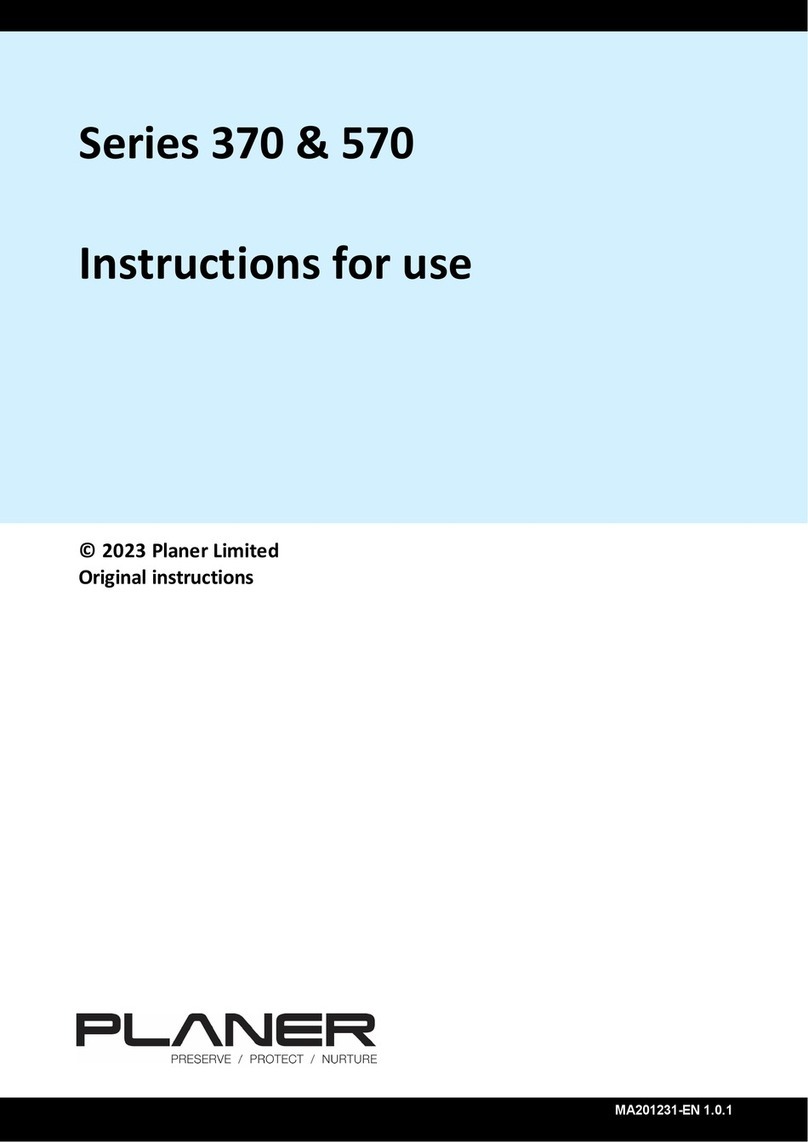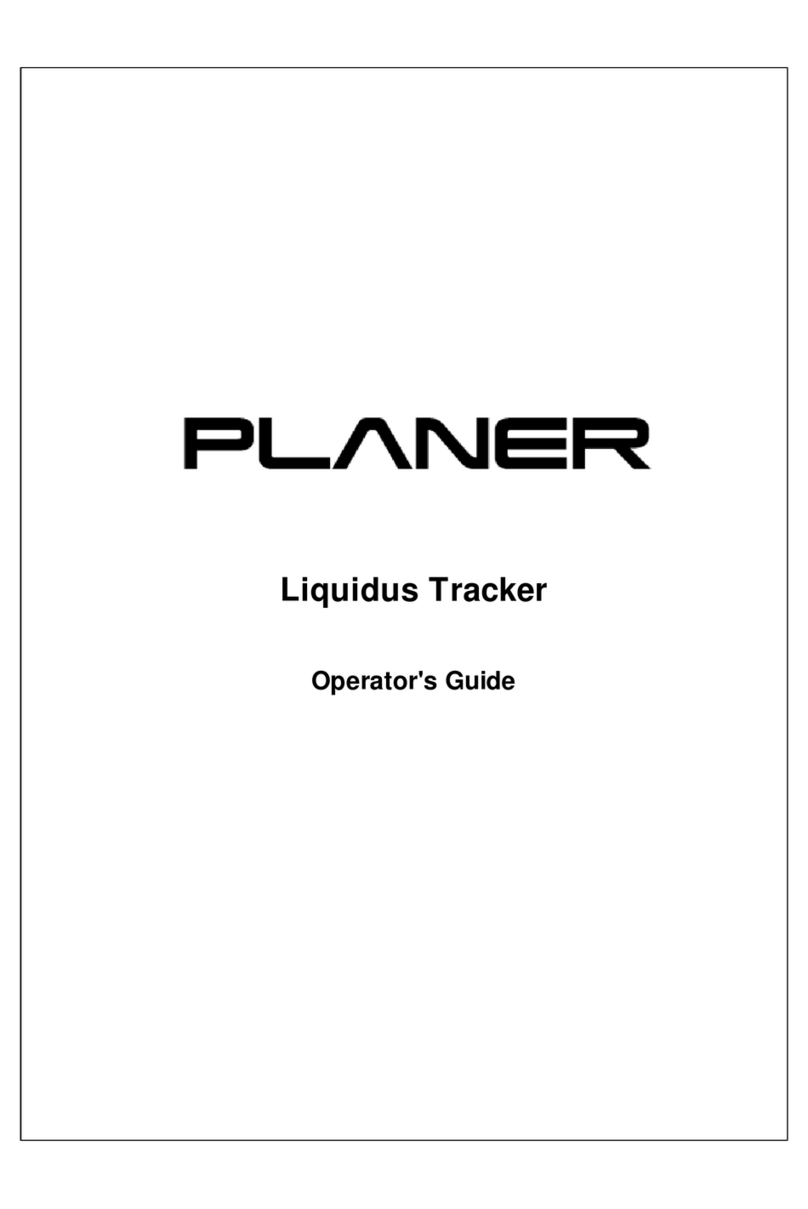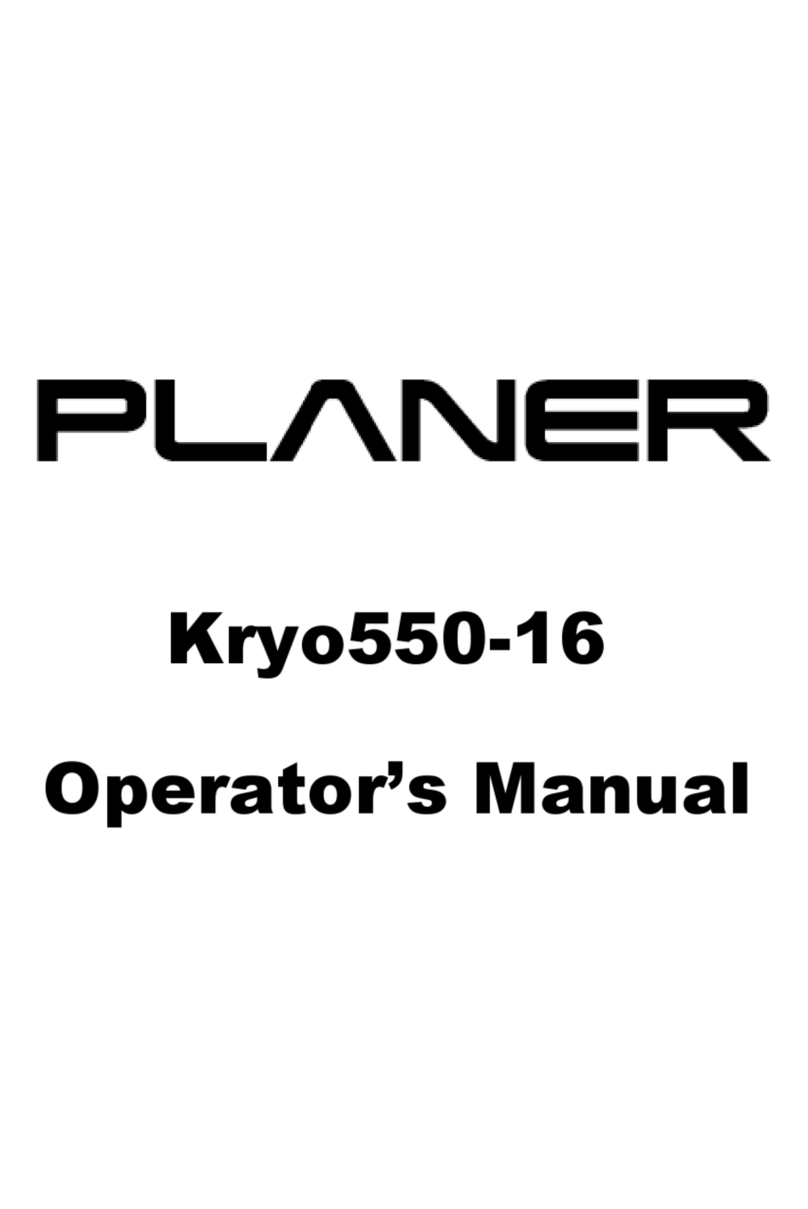
If liquid nitrogen is used in an area that requires forced ventilation, an
alarm to indicate its failure should be fitted.
When dispensing or potentially being exposed to liquid nitrogen, protect
the face with a shield and wear gloves, boots and a protective apron.
Prevent spillage into shoes and onto unprotected parts of the body.
Handle vessels containing liquid nitrogen carefully. Liquid nitrogen boils at
-196ºC and both liquid and gas can cause rapid and severe frostbite.
Delicate tissue, e.g. the eyes, can be damaged by an exposure to the cold
gas, which may be too brief to affect the skin of the hands or face.
Stand clear of boiling and splashing liquid nitrogen and its gas when filling
a dewar at normal room temperature or when inserting objects (such as a
pump) into the liquid.
Use tongs or wear cryogloves when handling cold or hot objects.
Cryogloves are available as an accessory from Planer plc. When running a
program, the chamber and contents may get cold enough to cause frostbite.
The dewar must be depressurised before the pump can be removed. This is
achieved by opening the pressure-relief valve mounted on the side of the
pump, which seals an orifice in the pressure system by toggle action. Avoid
contact with cold nitrogen gas when depressurising the dewar.
The dewars used with this equipment must never be used to store any liquid
other than liquid nitrogen.
Only use vessels designed for working with liquid nitrogen.
Secure the liquid nitrogen container to prevent toppling.
Ensure that the delivery pipe connections are secure and leak-free before
supplying liquid nitrogen to the freezer.
Liquid nitrogen pressure must not exceed 1.7 bar (25 psi).
To maintain protection against electric shock, the mains lead must be
properly fitted to a 3-way mains connector plugged into an earthed mains
outlet.
Because of the potentially wet laboratory environment, the operator should
be provided with additional protection against electric shock by supplying
mains power to the freezer through a residual current circuit breaker
(RCCB) operating at a differential of 30 mA. Note that care must be taken
iv































